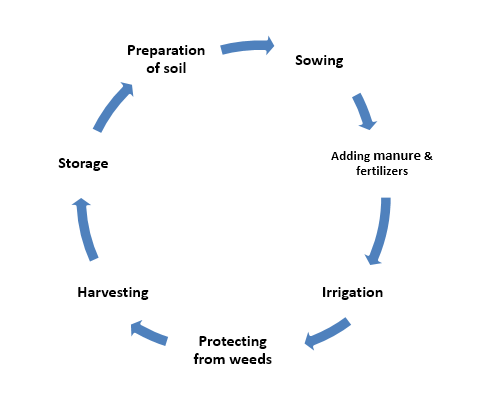What are agricultural practices? Define
Agricultural practices mean basically a collection of principles to apply for farm production processes in order to get better agricultural products. They are simply practices used in agriculture to facilitate farming. Nowadays, decent agricultural practices are some of the methods applied to agriculture, it helps to create food for consumers as well as for safe further processing. Our farmers are the key persons for the cultivation of crops to provide food to the entire population.
Following activities form the part of agricultural practices:

Here some essential farming agriculture practices:
1. Crop Rotation: This practice of growing different crops on the same land in succession method is mainly to preserve the productive capacity of the soil. It is the practice of growing a series of dissimilar crops in the same area in sequenced seasons. It is mainly done so that the soil of farms is not used for only one set of nutrients. It also helps in reducing soil erosion and increases soil fertility and crop yielding.
2. Cover Crops: It is largely embedded to manage soil fertility, quality, erosion, diseases, biodiversity, water, pests, weeds and wildlife in an agroecosystem. Nowadays, few countries only use this method of farming.
3. Soil Enrichment: There are various methods which are used to improve the quality (nutrients content, organism activities) of soil. Two majorly used types are the organic and inorganic method. The organic methods perform better than the inorganic in terms of biodiversity promotion.
4. Natural Pest Predators: Parasites, pathogens, and predators manage pest control. It is especially important for reducing the numbers of insects and mites by these living organisms, collectively called “natural enemies,” which is also called Biological control.
5. Biointensive Integrated Pest Management: A systems approach to pest management based on an understanding of pest ecology is often called BIPM. It primarily starts with the steps of diagnosing the nature and source of pest problems. Further, it is dependent on a range of preventive tactics within limits. As a last resort, risk pesticides are used in a reduced manner to minimize risks.